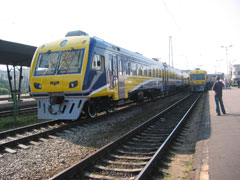Latvia, Legislation, Railways, Transport
International Internet Magazine. Baltic States news & analytics
Sunday, 28.04.2024, 17:20
Baltic Association of Transport and Logistics: new railroad payments will affect Latvia's competitiveness
 Print version
Print version |
|---|
In BATL's opinion, there are no economic grounds for increasing the payments, and the new payments will affect the freight flow via Latvian ports already in 2009, as well as the further development of the Latvian transit corridor, writes LETA.
Taking into account the large profit that the joint-stock railroad company Latvijas Dzelzcels (LDz) earned in 2007, the methodology of calculating the railroad infrastructure payments should be reconsidered, because currently LDz, being a monopoly, can raise the payments without any economic justification and regardless of the market situation, BATL believes.
BATL members include the companies Kalija parks, Ventspils Tirdzniecibas Osta, Ventspils Grain Terminal, Ostas Flote, SEASTAR, Naftaship, SSF Logistic, Baltijas Ekspresis, Mineral-Trans-Serviss, iLink, Ventbunkers.
As reported, the Public Utilities Commission yesterday approved new railroad rates for the year 2009.
The previous rates took effect in spring 2007 and, due to the increasing costs reported by LDz, the railroad infrastructure payments will be raised by an average 15% next year – 13.6% for freight transportation and 17.7% for passenger transportation.
The increase in the railroad rates endorsed by the Public Utilities Commission is smaller than that requested by LDz because, since LDz submitted the new rates at end-September, the situation in the national economy has changed significantly.
The new railroad infrastructure payments approved by the Public Utilities Commission are as follows: LVL 6.45 per kilometer for freight trains, and LVL 3.3 to LVL 3.9 per kilometer for passenger trains.








 «The Baltic Course» Is Sold and Stays in Business!
«The Baltic Course» Is Sold and Stays in Business!

